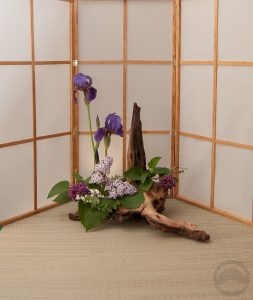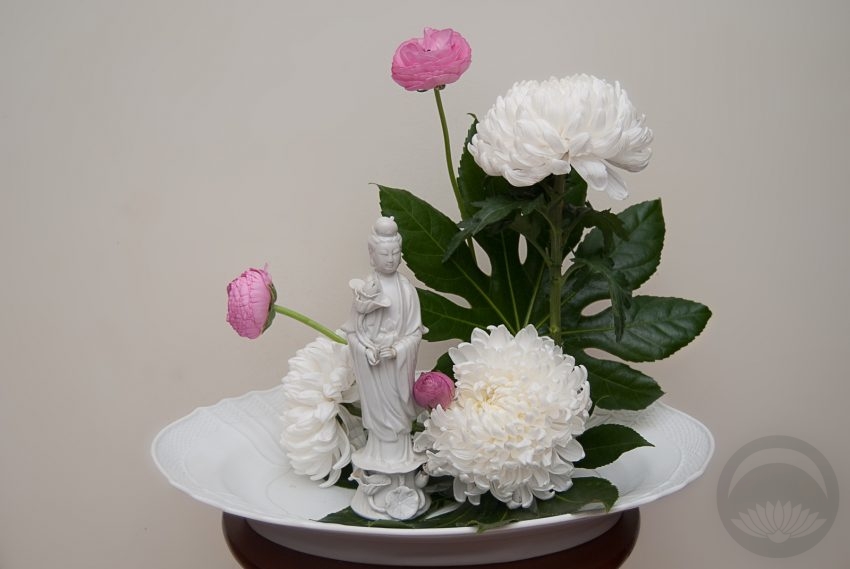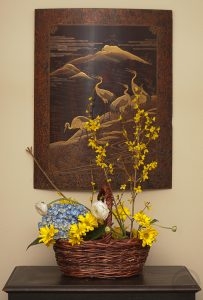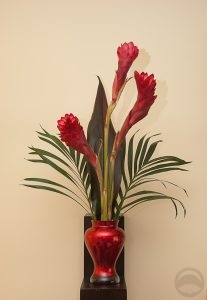 Today’s ikebana is inspired by our beautiful, bountiful garden. I love this time of year. It’s not oppressively hot or humid yet, but it’s warm and sunny and there are flowers blooming everywhere! It’s not great for my allergies, but they’re so pretty I can deal with it.
Today’s ikebana is inspired by our beautiful, bountiful garden. I love this time of year. It’s not oppressively hot or humid yet, but it’s warm and sunny and there are flowers blooming everywhere! It’s not great for my allergies, but they’re so pretty I can deal with it.
Everything in this arrangement came from the garden. Irises are one of my favourite flowers of all time, and my mother planted these gorgeous rich purple ones for me. I managed to catch them at the perfect time, freshly bloomed and vibrant. The lilacs are reaching the end of their life cycle, but I still liked the soft, textural quality they brought to the arrangement, helping to balance out the roughness of the wood. The leaves are from a huge ligularia plant. It’s nowhere near blooming yet, but I do hope to use some blossoms off it when it does.
I’m still riding the wave of motivation I got at the ikebana display last week. I was particularly inspired by the use of driftwood in several pieces there, as well as in one of those charming books Naomi sent me. I put my smaller kenzan in a little glass dish and nestled it into one of the natural curves of the wood. Funny story, this piece of wood is actually an old decoration from our aquarium. Our plecostomus likes to chew on them and smooth them out so we’ve got a bunch of old ones lying around.
Of course, I had to make use of the screen I made last week. I’m so pleased with how it looks, and it has an added bonus of helping diffuse light which makes the photos look much more even. I’m certain you will be seeing a lot more of this screen! I’m tempted to make one in black as well but I have lots of other things that need to be finished first.

















 Bebe Taian
Bebe Taian CHOKO Blog
CHOKO Blog Gion Kobu
Gion Kobu